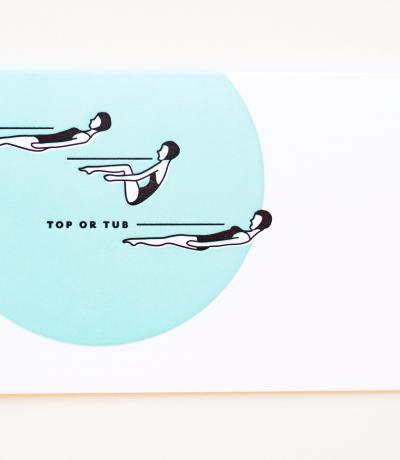How To Do The Tub In Synchronised Swimming
Swimming is one of the most body-active, fat-burning activities that one can do. Doing it well, however, is not nearly as easy at it may at first appear. It takes years of diligent practice to become an expert swimmer. Yet, the more basic moves can be mastered by anyone interested in the sport in a relatively short period of time. One of those basic swimming routines is know as “the tub.” No, there is not room to do the tub while in the tub, but anyone with access to a full-sized swimming pool will be able to put the below-given advice into actual practice.
Many local synchronised swimming clubs will give you a start at the tub, but you can get a preview of what’s involved right here. To do the tub, you need to begin in the correct position. The tub begins with a back float. Your back should be straight, your chin up and away from your chest, and your shoulders down. With your arms, you need to be sculling the water near your hips to keep afloat. Sculling is essentially moving your arms and hands back and forth in the water so as to displace significant amounts of water.
While on your back and sculling, draw your legs close in toward your chest. You should do this movement slowly, ever keeping your body in correct position as outlined above. Also remember to keep your toes touching the water and pointing straight away from you. It is, specifically, your knees that you will draw in toward your chest, bending them on the way.
The next thing to learn is to turn around in circles. After your legs are drawn in, simply scull more forcefully. Scull a bit harder with one hand than with the other so that you will naturally begin to turn in that direction. Of course, you can alternate which direction you are turning in by simply switching up which is the heavy-hitting hand.
It cannot be stressed too much that one must keep his or her legs about even with the water’s surface while doing the tub. The mid-body area will be “squished together” while the “ends” are extended. Correct form must be learned. All future swimming configurations will also involve strict adherence to predetermined forms. While this may be tedious and challenging at first, it will pave the way to swimming success in the long run.
Besides being a first step for swimming students, the tub is a great way to simply relax and play around while floating out in the pool or in the water at the beach. Having a way, besides doggy paddling, to stay afloat will be a benefit to all who enter the water.
Once the tub has been mastered, there are additional leg and arm motions that can be added to it. We will not go into those here, but it should be understood that the tub is a starting point that branches out to more complicated swimming moves.














